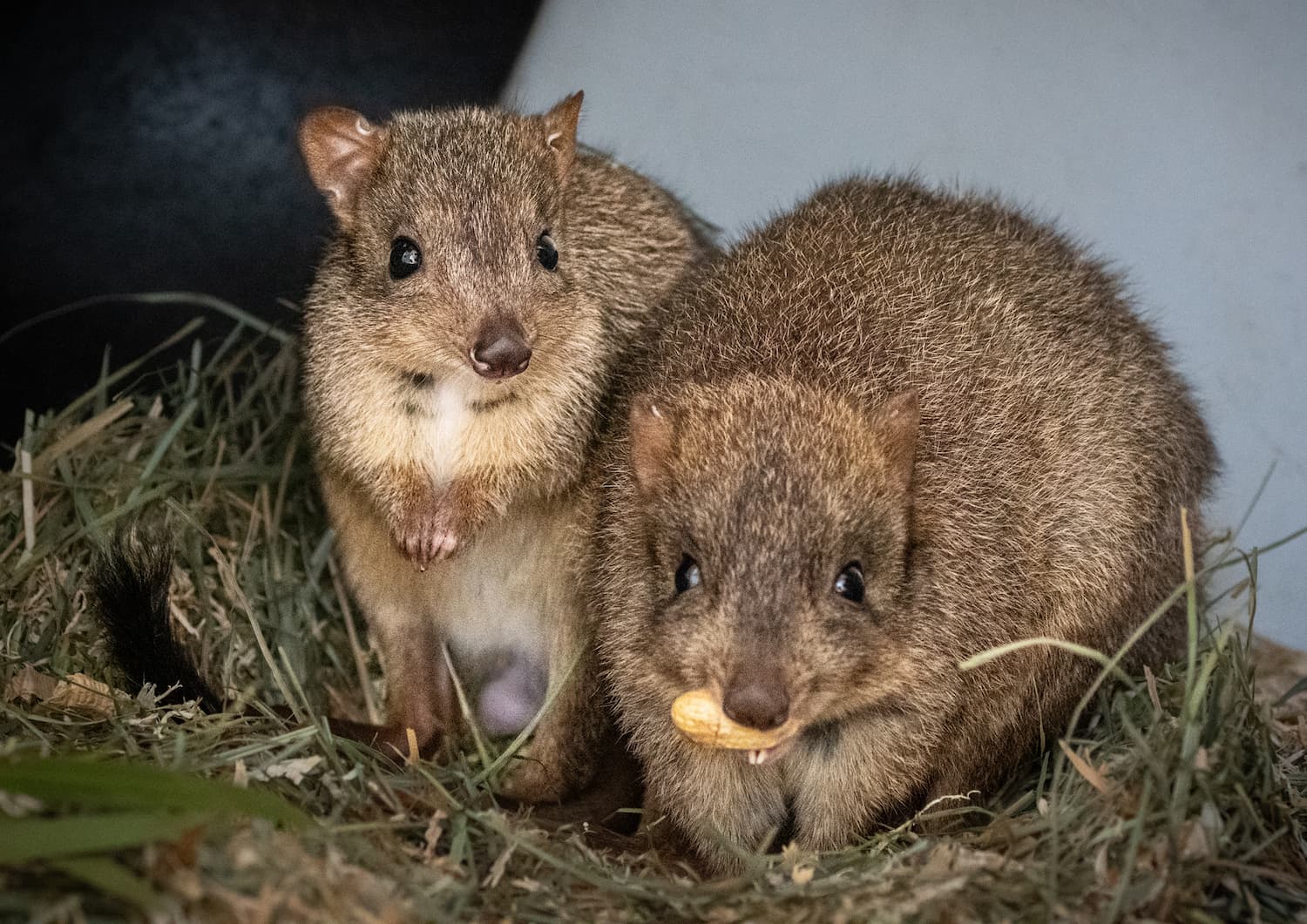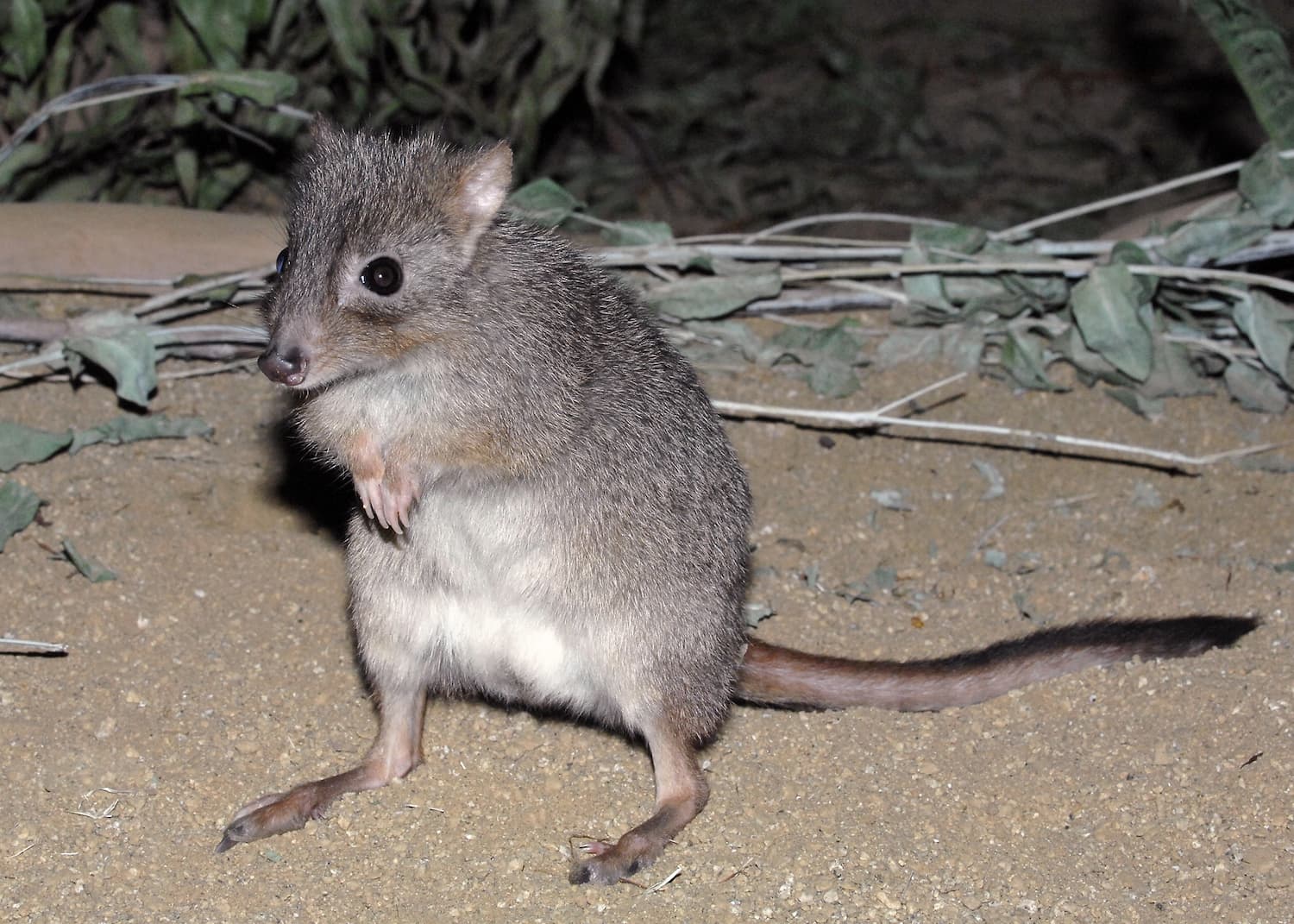
By Laura Parada
Would you believe there’s a marsupial that builds nests with its tail? Perhaps you would, because marsupials are known for doing some pretty unusual things. Brush-tailed bettongs—with their terrifically talented tails—are no exception.
In its native Australia, the brush-tailed bettong is known as a “woylie.” Don’t let its rodent-like appearance fool you, this creature is a macropod (Greek for “large footed”), a group that includes kangaroos and wallabies. Like other macropods, they have long tails, short arms, and hop on two big feet. Females carry their joeys in a pouch. The biggest difference is size: the brush-tailed bettong weighs just three to six pounds.
Unlike kangaroos and wallabies, whose tails are thick and muscular, the brush-tailed bettong’s tail is partially prehensile. A perk of having a prehensile tail is the ability to wrap it around the twigs, grass, and bark it collects as nesting material, making it easier to carry it back to the nest. Brush-tailed bettongs are fungivores, which means they primarily eat mushrooms. They also consume roots, tubers, bulbs, greens, and insects. Although they are small, they play a big role in distributing fungal seeds and spores in the wild.

The brush-tailed is one of five species of bettong—and the only one that is critically endangered. Once found across Australia, it now only inhabits small parts on the continent’s western side. Its drastic decline is largely due to habitat loss, wildfires, and the introduction of non-native predators such as the red fox and feral cat. To help prevent its extinction, the L.A. Zoo has supported the Australian Wildlife Conservancy’s efforts to reintroduce the species to the wild.
Closer to home, the Zoo plays an important role in bettong conservation through our involvement in the collaborative Species Survival Plan (SSP). L.A. Zoo Animal Keeper Andrea Delegal is SSP coordinator and studbook keeper for the brush-tailed bettong. SSPs are programs that manage species to maintain a sustainable captive population. Studbooks—detailed registries of all individuals of a species in managed care—are one of the tools by which SSPs accomplish their goal. Delegal not only cares for the L.A. Zoo’s bettongs, she also makes breeding recommendations for the entire bettong population in North American zoos. So, she was doubly excited when she spotted a new joey earlier this year. The youngster emerged from its mother’s pouch in mid-March.
“It’s important to help the population continue to grow, especially after the recent wildfires in Australia.”
Animal Keeper Andrea Delegal

The Zoo’s bettong family is currently enjoying some bonding time in a behind-the-scenes area of the Zoo.
“It’s important to help the population continue to grow, especially after the recent wildfires in Australia,” Delegal shares. “Most of the Australian species are in trouble. A new birth for a declining species is always a good thing.”
This article was originally published in the Summer 2021 issue of Zoo View, the Greater Los Angeles Zoo Association’s premium quarterly member magazine. Not a member? Explore the benefits of membership and join today.

